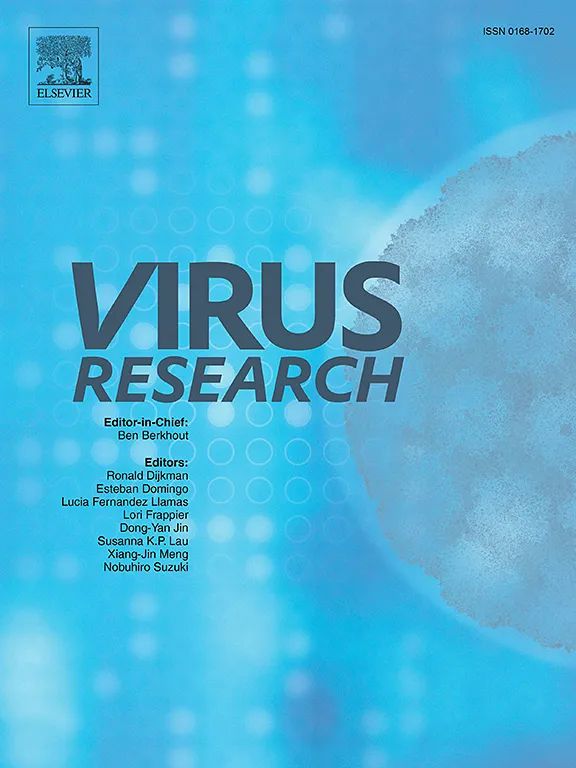ZFP36 Facilitates Senecavirus A (SVA) replication by inhibiting the production of type I interferon
IF 2.7
4区 医学
Q3 VIROLOGY
引用次数: 0
Abstract
Zinc finger proteins (ZFPs) play an important role in the host-virus interplay. Zinc finger protein 36 is a member of the zinc finger protein 36 family, which includes two other paralogs, namely ZFP36L1 and ZFP36L2. Studies have demonstrated that ZFP36L1 acts as a host defender against influenza A virus and flaviviruses. However, the role of ZFP36 in host-virus interactions has not been thoroughly investigated. Here, we demonstrated that human zinc finger protein 36 (hZFP36) exhibited potent pro-viral activity during Senecavirus A infection. Overexpression of ZFP36 facilitated Senecavirus A infection, while hZFP36 knockdown inhibited viral replication. The ZF motifs of hZFP36 are key for promoting viral proliferation. hZFP36 stabilized Senecavirus A VP1 by binding to it. Furthermore, hZFP36 inhibited SeV-mediated IFN-β production through inducing caspase-dependent cleavage for MAVS. These findings provide insights into the mechanism of action of ZFP36 in host-virus interactions.
ZFP36 通过抑制 I 型干扰素的产生促进塞内卡病毒 A (SVA) 的复制。
锌指蛋白(ZFP)在宿主与病毒的相互作用中发挥着重要作用。锌指蛋白 36 是锌指蛋白 36 家族的成员,该家族包括另外两个旁系亲属,即 ZFP36L1 和 ZFP36L2。研究表明,ZFP36L1 是宿主抵御甲型流感病毒和黄病毒的屏障。然而,ZFP36 在宿主与病毒相互作用中的作用尚未得到深入研究。在这里,我们证明了人锌指蛋白36(hZFP36)在塞内卡病毒A感染过程中表现出强大的促病毒活性。ZFP36 的过表达促进了塞内卡病毒 A 的感染,而 hZFP36 的敲除则抑制了病毒的复制。hZFP36的ZF基序是促进病毒增殖的关键。此外,hZFP36通过诱导依赖于MAVS的Caspase裂解抑制了SeV介导的IFN-β产生。这些发现为研究 ZFP36 在宿主与病毒相互作用中的作用机制提供了启示。
本文章由计算机程序翻译,如有差异,请以英文原文为准。
求助全文
约1分钟内获得全文
求助全文
来源期刊

Virus research
医学-病毒学
CiteScore
9.50
自引率
2.00%
发文量
239
审稿时长
43 days
期刊介绍:
Virus Research provides a means of fast publication for original papers on fundamental research in virology. Contributions on new developments concerning virus structure, replication, pathogenesis and evolution are encouraged. These include reports describing virus morphology, the function and antigenic analysis of virus structural components, virus genome structure and expression, analysis on virus replication processes, virus evolution in connection with antiviral interventions, effects of viruses on their host cells, particularly on the immune system, and the pathogenesis of virus infections, including oncogene activation and transduction.
 求助内容:
求助内容: 应助结果提醒方式:
应助结果提醒方式:


